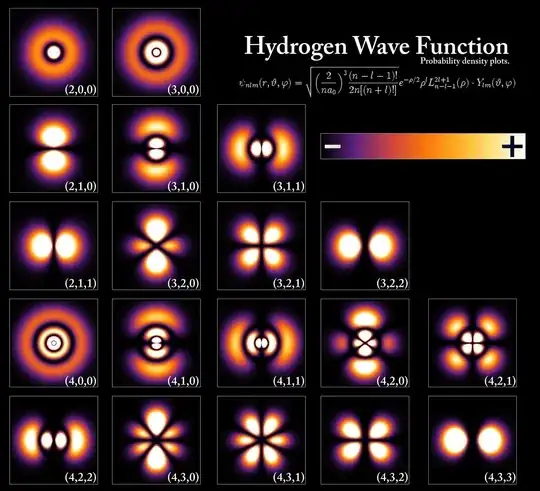The shape of a distribution of charges is described in terms of multipole expansion, which you can think of as similar to Fourier expansion but in two dimensions. The total charge gives you the "monopole term", whose interaction is spherically symmetric. If there's an offset between the center of the mass distribution and the center of the charge distribution, you have a dipole moment. A coin-shaped or cigar-shaped distribution has nonzero quadrupole moment, a pear-shaped distribution has an octupole moment, and so on. As in Fourier analysis, it's possible to represent any charge distribution in terms of multipole moments, though a shape with sharp edges (like, say, a cube) would require an infinite number of terms.
The electron cannot be cube-shaped, or even coin- or cigar-shaped, due to a theorem relating multipolarity and spin. A spinless particle may have a monopole moment, but not a dipole moment; a spin-half particle may have monopole and dipole moments, but not a quadrupole moment; a spin-one particle may have monopole, dipole, and quadrupole moments, but not octupole moments. A handwavy, cartoony way to think of this is that any such moments must be quantized along the direction of the particle's spin — otherwise, as the particle spins, they'd average to zero. If you wanted the electron's charge distribution to be cigar-shaped, like a uranium nucleus is, you'd need to specify that a polarized electron has more charge near its poles than it does near its middle. But a spin-half particle doesn't have any spin projection near its middle — there are only "up" and "down." An electron may have monopole and dipole moments, but doesn't have enough degrees of freedom to have any more complicated shape.
Furthermore, we have the observation that the electron's interactions are very nearly invariant under the symmetries of parity conjugation, $P$, and charge conjugation, $C$. This further restricts the moments that are available, because the electron's spin, to which the dipole moments must be coupled, is an axial vector and does not change sign under $P$. To a very good approximation, then, the electron's mass and charge distributions may carry only a monopole moment, while its magnetic field (another axial vector quantity) may carry only a dipole moment. This gives us the usual toy-model picture of an electron as a spherical, spinning bar magnet.
However, the electron's interactions are not quite invariant under conjugation of parity and charge at the same time. This transformation, $CP$, is the operator that transforms an electron into a positron. Our strongest evidence that the universe treats electrons and positrons differently is that the universe is quite full of electrons, but contains only incidental positrons. To reach this state requires, among other things, $CP$ violation. But essentially every model that contains enough $CP$ violation to predict our observed matter/antimatter asymmetry also predicts permanent electric dipole moments for the proton, electron, and neutron which are much larger than the current limits. This is what the Hudson and DeMille groups have measured in the news stories you found. I thought that DeMille's explanation in your first link was quite nice.
